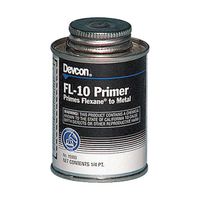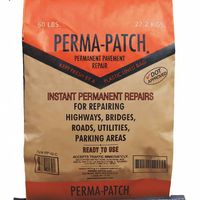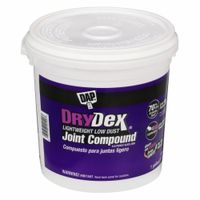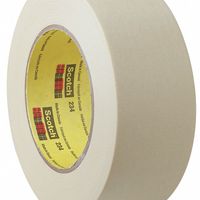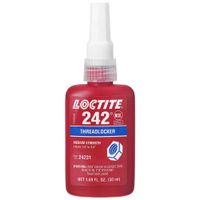Call +(254) 703 030 000 / 751 483 999 / 721 704 777
- Home
- Adhesives Sealants And Tape
.....Read More
Frequently Asked Questions
What are the best adhesives for bonding metal to metal?
For strong metal-to-metal bonds, several adhesives excel. Epoxies are versatile, offering high strength, chemical resistance, and gap-filling capabilities. They are ideal for structural applications. Cyanoacrylates (super glue) provide fast, strong bonds for smaller, non-porous metal parts. Acrylics offer good impact resistance and flexibility, making them suitable for dynamic loads. Urethanes provide excellent flexibility and peel strength, often used in automotive and construction. For high-temperature applications, specific silicone or ceramic-based adhesives might be necessary. The best choice depends on the specific metals, environmental conditions, and strength requirements.
How do I remove adhesive residue from surfaces?
To remove adhesive residue, start by scraping off as much as possible with a plastic scraper. For stubborn residue, consider using household products like rubbing alcohol, vinegar, or peanut butter on a soft cloth. Apply a small amount, let it sit for a few minutes, then gently rub and wipe away. For more resistant adhesives, commercial removers designed for the specific surface material can be effective. Always test any product on an inconspicuous area first to prevent damage. After removal, clean the area with soap and water to eliminate any remaining residue or cleaning agent.
What is the difference between adhesives and sealants?
Adhesives and sealants both bond materials, but their primary functions differ. Adhesives are designed for strong, load-bearing bonds, creating a permanent connection between two surfaces. They prioritize cohesive strength to resist separation. Sealants, on the other hand, are formulated to fill gaps, prevent leaks, and provide a protective barrier against environmental factors like moisture and dust. They prioritize flexibility and elasticity to accommodate movement and maintain a tight seal, even under vibration or thermal expansion. While some products offer properties of both, their main purpose dictates their classification.
Which adhesive is strongest for plastic materials?
For the strongest bond with plastic materials, cyanoacrylate adhesives, commonly known as super glues, are often effective for many types of plastics, particularly smaller repairs. For a more robust and durable bond, especially for structural applications or dissimilar plastics, two-part epoxy adhesives or specialized plastic welding solutions like those involving solvents or heat may be necessary. The best choice ultimately depends on the specific type of plastic, the stress the bond will endure, and the desired drying time. It's crucial to identify the plastic type to select the most compatible adhesive.
How long does it take for adhesive to fully cure?
The time it takes for an adhesive to fully cure can vary significantly depending on the type of adhesive and environmental conditions. For many common household or craft adhesives, initial tack might be achieved within minutes, but full cure, where the adhesive reaches its maximum strength and durability, can take anywhere from 24 to 72 hours. Industrial-grade or specialized adhesives might have even longer cure times, sometimes days or even weeks, especially if they are two-part epoxies or rely on specific temperature and humidity levels for optimal curing. Always refer to the manufacturer's instructions for the most accurate curing times for a specific product.
What type of tape is best for outdoor use?
For outdoor use, tapes need to withstand varying weather conditions, UV radiation, and temperature fluctuations. The best types of tape for these demanding environments are typically those made with robust materials and strong, weather-resistant adhesives.
Duct tape, especially heavy-duty or all-weather varieties, is a popular choice due to its strong adhesive and durable backing, often made of polyethylene. Similarly, specialized outdoor tapes like Gorilla Tape offer superior strength and weather resistance. Silicone self-fusing tape is excellent for sealing and insulating due to its ability to create a watertight, airtight bond without adhesive. Lastly, PVC electrical tape designed for outdoor use provides good insulation and weather protection for electrical applications.
Can sealants be used underwater or in wet conditions?
Whether sealants can be used underwater or in wet conditions depends entirely on the specific sealant product. Many standard sealants are not designed for such environments and will not cure properly or maintain adhesion when exposed to water during application or curing. However, there are specialized marine-grade or wet-application sealants specifically formulated to cure and perform effectively in damp or fully submerged conditions. These often utilize unique chemical compositions that react with moisture to create a strong, durable bond. Always check the product specifications and instructions for the sealant you intend to use to ensure it is suitable for wet or underwater applications.
What are the safety precautions when using industrial adhesives?
When using industrial adhesives, always prioritize safety. Ensure proper ventilation to avoid inhaling fumes, which can be irritating or hazardous. Wear appropriate personal protective equipment (PPE), including gloves and safety glasses, to prevent skin and eye contact. Read the product's Safety Data Sheet (SDS) thoroughly for specific handling instructions, first aid measures, and storage requirements. Store adhesives in a cool, dry, and well-ventilated area, away from incompatible materials and ignition sources. In case of spills, follow recommended cleanup procedures. Always work in a controlled environment to minimize risks.
How do I choose the right adhesive for wood projects?
Choosing the right adhesive for wood projects depends on several factors, including the type of wood, the project's intended use, and desired drying time. Polyvinyl acetate (PVA) glues like yellow carpenter's glue are versatile for general indoor projects, offering strong bonds and easy cleanup. For outdoor or water-resistant applications, consider polyurethane glues or epoxy, which provide excellent durability. Cyanoacrylate (CA) glue, or super glue, is ideal for quick fixes or bonding small pieces. Ultimately, match the adhesive's properties to your project's specific requirements for the best results.
What is the shelf life of adhesives and sealants?
The shelf life of adhesives and sealants varies significantly based on their chemical composition, storage conditions, and packaging. Generally, most adhesives and sealants have a shelf life ranging from 6 months to 2 years when stored in their original, unopened containers in a cool, dry place away from direct sunlight and extreme temperatures. Some specialized products, like certain epoxies or anaerobics, might have shorter shelf lives. Always refer to the manufacturer's recommendations and the product's technical data sheet for precise shelf life information, as using expired products can lead to compromised performance and adhesion failures.

